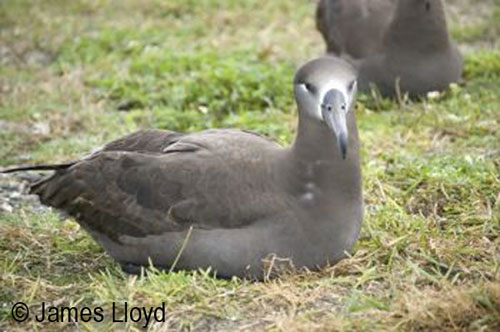Sarah Caccamise (Department of Molecular Biosciences and Bioengineering, University of Hawaii at Manoa, Hawaii, USA) and colleagues, writing in the journal Ecological Indicators, have looked at levels of polychlorinated biphenyls (PCBs) in Black-footed Phoebastria nigripes and Laysan P. immutabilis Albatrosses on Midway Atoll in the North Pacific.
The paper's abstract follows:
"Polychlorinated biphenyls (PCBs) are ubiquitous chemicals that were used as additives in capacitors and transformers; and heavy contamination in the past of Midway Atoll, a national wildlife refuge, puts the wildlife, including the black-footed albatross (BFAL), at risk. In this study, we assess the profiles and toxicity of the individual PCB congeners at a natural equilibrium state in various tissues of 1-month old and 4-5-month old BFAL chicks and black-footed and Laysan albatross eggs found on the atoll. In the 1-month old chicks from Midway Atoll, the major seven congeners PCBs 99, 118, 138, 153, 170, 180 and 183 accounted for 36-78% of the total PCBs in the various body parts, and the total PCB concentrations in the bird samples are inversely related to the total body weights. In the 4-5-month old chicks, these same congeners accounted for much lower percentages (7-26%) than in the 1-month-old chicks, with higher amounts of the less chlorinated congeners. The total toxic equivalents (TEQs) for all of the tissues in the 1-month old chicks ranged from 130 to 11,000 pg g-1 (lipid weight, lw), and the total TEQs for the 4-5-month old chicks ranged from 18,000 to 100,000 pg g-1. The average total concentration was 7.9 and 4.6 μg g-1 lw in the BFAL eggs and Laysan albatross eggs, respectively. The high concentrations could be accounted for by the age and PCB accumulation of the female producing the egg. The average TEQs were 70 and 90 pg g-1 in the Laysan albatross eggs and BFAL eggs, respectively. This PCB concentration and toxicity information can be used to determine the toxicological risk of the BFAL chicks while nesting at Midway Atoll, and the analysis of the albatross eggs is an indication of the contamination of the female albatross at the time of egg formation, with the levels acting as an indicator of the total PCB body burdens that the females are experiencing. The information from this study is indicative of the toxicological risk to the seabirds that nest and feed near Midway and of the overall PCB contamination in the North Pacific Ocean."

Black-footed Albatross. Photograph by James Lloyd
Reference:
Caccamise, S.A.L., Wang, J., Wu, L., Woodward, L.A. & Li, Q.X. 2012. Accumulation and toxicity assessment of polychlorinated biphenyls in black-footed albatross (Diomedea nigripes) from Midway Atoll, North Pacific Ocean. Ecological Indicators 20: 75-81.
John Cooper, ACAP Information Officer, 23 March 2012

 Français
Français  English
English  Español
Español